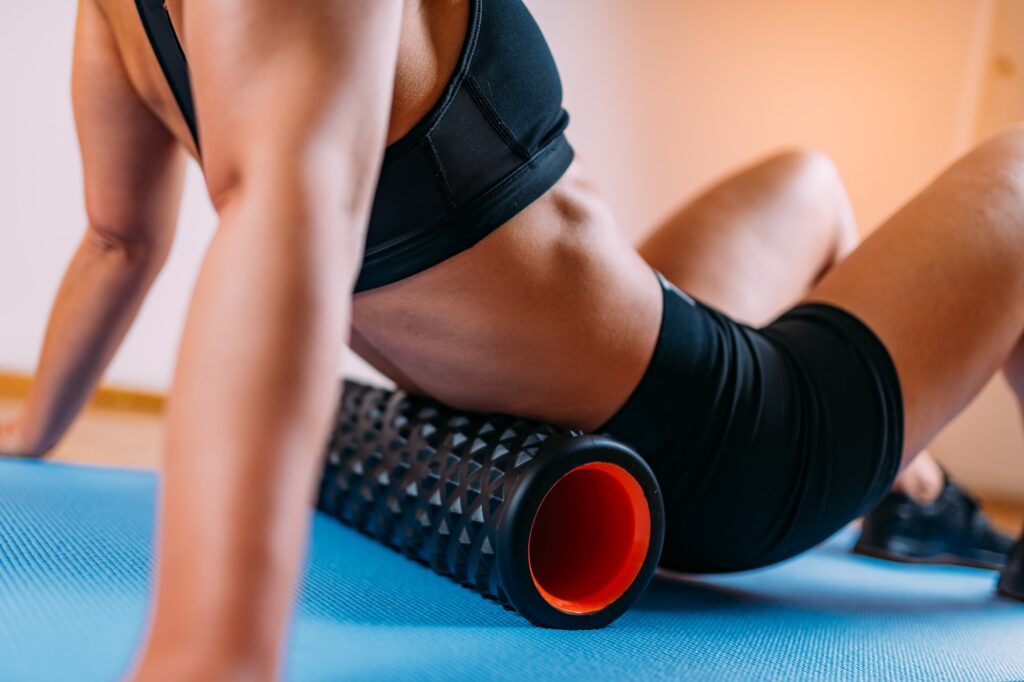Lactic acid is frequently attributed to muscle soreness. However, lactic acid buildup actually doesn’t cause sore muscles. At the same time, you don’t want lactic acidosis, a condition that results when there is too much lactic acid in the body, since this can lead to some serious complications. Thus, during and after intense exercise, recovery is of the utmost importance.
In this article, we’re going to explore the great lactic acid debate, as well as what you should know about how it might impact your recovery.
What is Lactic Acid?
Lactic acid is a metabolite produced as a byproduct of metabolism. The metabolism of glucose (which often comes from carbohydrates in the food we eat) results in lactate. Meanwhile, the liver is actually able to convert lactate back into glucose. This is known as the Cori Cycle, which might bring up memories of your high school biology class. The Cori Cycle takes place during glycolysis, which is the process your body uses to create usable energy known as ATP.

Basically, lactate levels can begin to increase when there isn’t enough oxygen to break down glucose or glycogen. While your red blood cells work hard to bring oxygen to the areas of the body that need it and take carbon dioxide away, with intense whole-body exercise, lactic acid production continues in the muscle cells, leading to a build up of lactate.
As previously mentioned, lactic acid is not the reason your muscles feel sore after a workout or why you have a burning sensation during your workout. Rather, your muscles feel sore from small micro-tears, which is a side effect of progressive overload (such as lifting heavy weights or increasing your reps or sets).
Basically, lactic acid has three main functions, which include:
- Being used as an energy source for the mitochondria in the cells
- Helping produce glucose
- And being used as a signalling molecule for various functions and processes.
Yet, lactic acid levels that get too high can result in various complications, such as shallow breathing, reduced appetite, stomach issues, and more. In fact, lactic acidosis in the human body usually indicates another underlying condition is at play, such as heart failure, severe infection, sepsis, kidney disease (or metabolic acidosis), arterial disease, diabetes, liver disease, or another condition causing hypoxia (low oxygen in the body). Additionally, according to the Mayo Clinic, some medications can lead to lactic acidosis, including metformin and nucleoside reverse transcriptase inhibitors (which are used to treat HIV).
Lactic acidosis is usually diagnosed via a blood test performed by your doctor. This test measures that amount of lactate dehydrogenase present. If your blood test comes back with a high blood lactate level, this could indicate an underlying condition is present. Your doctor may then perform further testing.
How Does Lactate Impact Recovery?

Well, usually, when you cool down, your body is able to obtain adequate oxygen once again. With sufficient oxygen, the body is able to revert lactate into pyruvate, allowing for the body to recover.
However, again, if you have an underlying condition, recovery may take longer and you may feel more fatigued as your body works to clear lactic acid with fewer resources. Usually, if lactic acidosis is occurring, you will experience other symptoms including:
- Fruity-smelling breath
- Jaundice
- Difficulty breathing
- Confusion
- Muscle cramps
- Diarrhea
- Rapid heart rate
- Headaches
If you experience the symptoms above, particularly the first three, seek out immediate medical attention.
How to Recovery Better
Generally, muscle soreness is caused by small micro-tears in the muscle. This can further create adhesions and scar tissue, causing soreness for days after (also known as delayed onset muscle soreness).
Luckily, there are many options to recovery after a workout, including:
- Ensuring you obtain adequate hydration
- Foam rolling
- Stretching
- Percussion massage guns
- Compression recovery boots
- Other myofascial release tools, such as muscle rollers, massage balls, lacrosse balls, and more
- Cold exposure, such as a cold shower or bath
- Active recovery routines, such as dynamic stretching or walking
- Making sure you eat a healthy snack or meal after your workout including plenty of protein and carbohydrates
- Sleep (most adults need about 7-9 hours of sleep each night)
- Taking rest days when needed (overtraining can lead to inadequate recovery and reduced performance)

Ultimately, you don’t need to do all of the above (although, everyone needs a rest day every now and again, and sleep is undeniably important!). At the end of the day, it’s all about finding something that works for you, your body, and your life. You might find foam rolling works wonders for your body after an intense workout. Meanwhile, someone else might prefer to stretch it out and walk it off.
Did You Know?
- Lactic acid doesn’t cause sore muscles. Usually, sore muscles happen due to tears in the muscle that occur from progressive overload techniques.
Final Thoughts…
Lactic acid gets a bad rap! But it isn’t as bad as it’s made out to be. In fact, it’s usually blamed for muscle soreness, which turns out is a myth! In reality, lactic acid can be used to fuel your workout as your body works to convert it back into glucose.
At the same time, you want to ensure you include recovery and cool down techniques as part of your regular workout routine. By doing so, you can continue to make progress toward your goals and start seeing the results you want to see.

